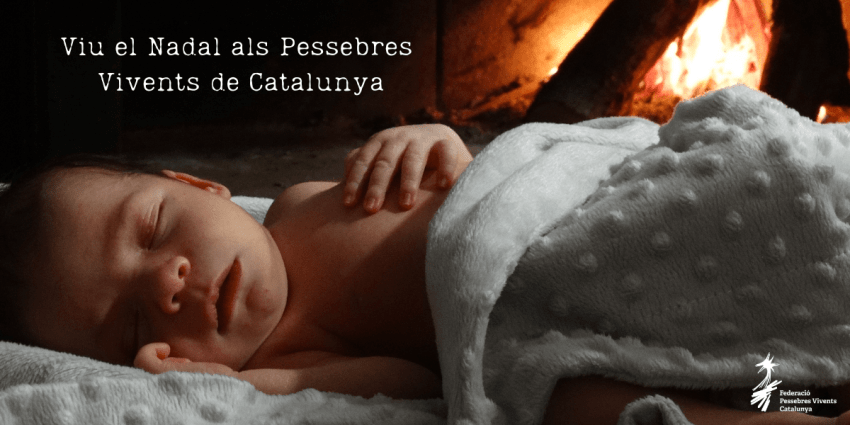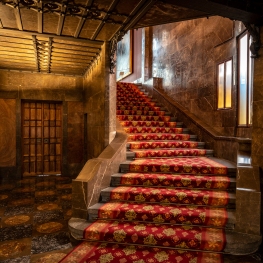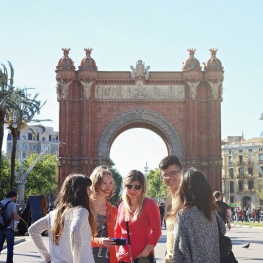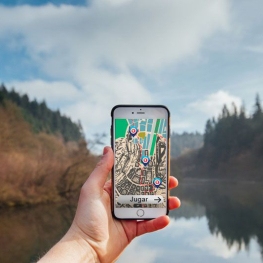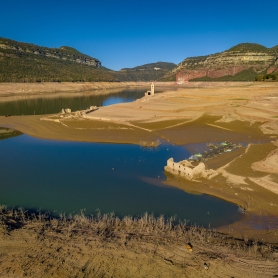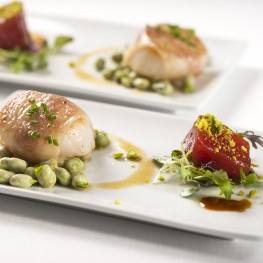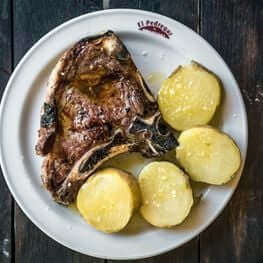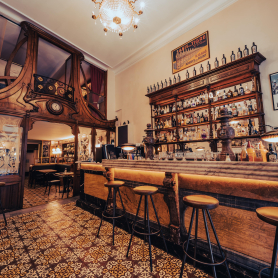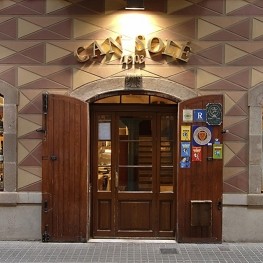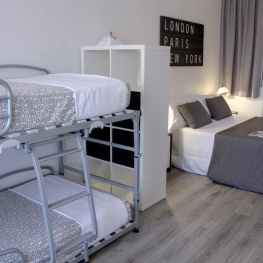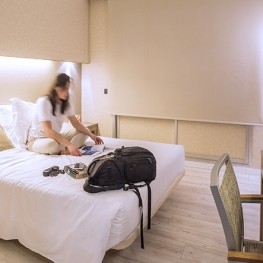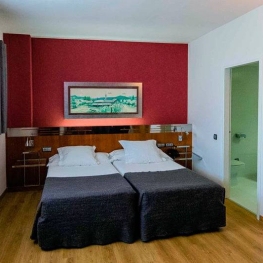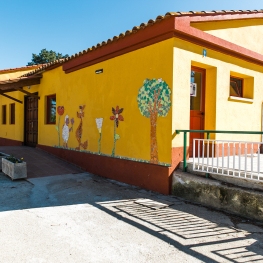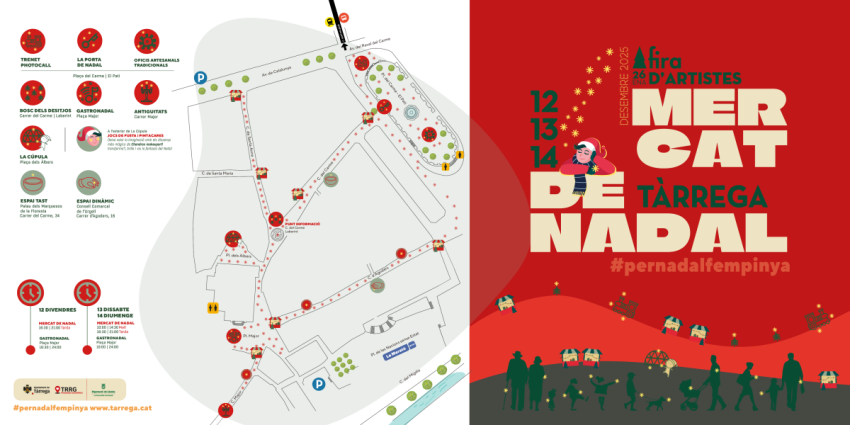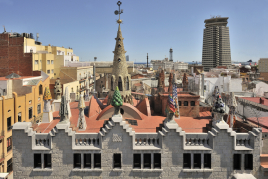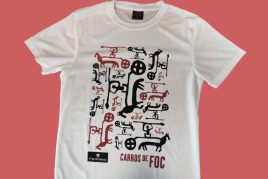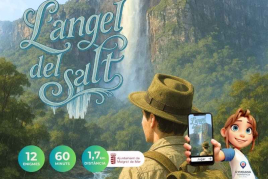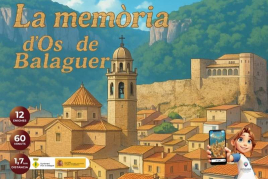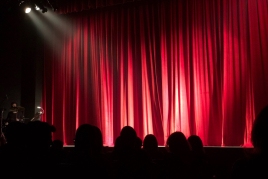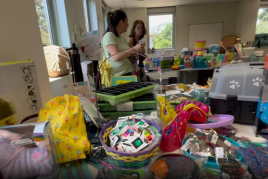Route of Catalan art in the 18th century

Since ancient times, know different ways of living, as well as ways to express and experience the artistic reactions of people.
We can travel to the cave, where different types of pigments used to recall the hunt they had done that day or we get to today, where we often find works that make us dance the head and sometimes cost us understand. But from one point to another, art has gone through different forms and styles.
And it is on this path femTurisme.cat dedicated AL1714 where we will see what were the influences of the eighteenth century and how can contemplate the works yet.
To do this, we will go to different parts of Catalonia, following the different artistic expressions of the moment.
Reconstructions
 After the War of Succession, as happens in all wars, the territory must be rebuilt.
After the War of Succession, as happens in all wars, the territory must be rebuilt.
In Catalonia, this reconstruction is made ??from a new stylistic models that allowed renew not only the city of Barcelona , but also other places in Catalonia.
Obviously, these artistic influences would remain in the country for some time.
The artistic traits that left more traces in the Catalan art of the eighteenth century were the Rococo, Neoclassicism and French academicism. All of them, however, were adopted and acquiring Catalan personality that has given to works which are and which are find where they are.
The military influence
 Given the historical context that the country experienced, expected that more people trained in the art, especially conceived as a functional element, would be those military engineers Bourbon that would order the different spaces, especially the city of Barcelona .
Given the historical context that the country experienced, expected that more people trained in the art, especially conceived as a functional element, would be those military engineers Bourbon that would order the different spaces, especially the city of Barcelona .
. The characteristic of this influence element included the construction of the Citadel From the initial construction of this set 3 baroque buildings are preserved:
The Arsenal: the current Parliament of Catalonia, which was expanded by two lateral bodies, among others.
The Chapel: it continues to maintain its military significance.
The Governor's Palace: that is currently used as high school.
The three buildings maintain the reddish hue of its construction and rectangular shapes that give the windows, structure and ornamental elements. All of them can be considered part of the same architectural complex, not only because of where they are located, but also the style and the materials used.
Crosshatched façades
 As for the decorations of the facades of religious buildings or civil use, showed an architectural innovation: the sgraffito.
As for the decorations of the facades of religious buildings or civil use, showed an architectural innovation: the sgraffito.
This technique consists of making incisions on the surface of a wall, in this case, for hinting the material in the lower part thereof and typically different color.
The sgraffito we found this on the facade of the church of San Martí de Sant Celoni . All were made ??in 1762 and are considered the biggest graffiti in Europe. Its theme is dedicated to the virtues of faith, hope, charity and justice. Their shapes are figures of angels, saints and other silhouettes having as a white tone predominant color in figures and a raw tone on the bottom of the wall.
As for the civil sculpture, amid the Rambla de Barcelona found the building or house Sailboats Guild of Silk. This building can go unnoticed if not raise his head, but once you know it is there, one when passing it is always fixed.
 The tones of the facade are reddish, as are the buildings of the Citadel. The clear figures stand in columns and plant ornamentation, but the most notable elements are all human figures that are located on the first floor and seem to support decorative columns that are in the higher floors. The sgraffito is so great that almost no space unadorned, just enough to see the contrast of colors.
The tones of the facade are reddish, as are the buildings of the Citadel. The clear figures stand in columns and plant ornamentation, but the most notable elements are all human figures that are located on the first floor and seem to support decorative columns that are in the higher floors. The sgraffito is so great that almost no space unadorned, just enough to see the contrast of colors.
There are other facades also use this technique of sgraffito and in which are represented scenes from everyday life or field.
We should add that the art of sgraffito not tiptoes through the Catalan art is that during the novecentismo is one of the usual techniques with which you work.
Baroque sculpture
Although in the field of sculpture, Baroque was one of the predominant styles in Catalonia in the eighteenth century did not take long to appear the new neoclassical influences that will shape a sculptural style, especially when it relates to religious sculpture.
 In this sense, also change the themes and allegorical images begin to appear and mythological figures.
In this sense, also change the themes and allegorical images begin to appear and mythological figures.
They show these, decorative elements Gleva Sanctuary, situated in Les Masies of Voltregà , and the church of Santa María de Arenys de Mar .
The latter is dominated by a huge gilded altarpiece fail every angle of the back of the altar of the church to do the work and persistence conducted in this great work visible.
From the outset and is composed of two distinct parts: the base and the top. Not only differ in styles, but also a sculptor and time.
The base consists of geometric decorations golden, light and dark colors. The top, in turn, consists of a lower bottom and two central decorative levels divided into five vertical parts. The central part is higher than the rest from the lower level.
Moreover, the entire altar is crowned by whole unsupported sculptures on the back. Also dominated Solomonic columns and other smooth style but with vegetable decorations.
With all of these items, the altarpiece becomes a work of exceptional showmanship.
Baroque painting
 In the field of Baroque painting highlights the work of Antoni Viladomat, a Barcelona painter who did a series of paintings devoted to the life of Francis of Assisi, in addition to the paintings found in dels Dolors Chapel of the Basilica of Santa Maria in Mataró .
In the field of Baroque painting highlights the work of Antoni Viladomat, a Barcelona painter who did a series of paintings devoted to the life of Francis of Assisi, in addition to the paintings found in dels Dolors Chapel of the Basilica of Santa Maria in Mataró .
Of paintings found in the Chapel dels Dolors include pictures of the evangelists and the apostles and the Via Crucis. These works and all together represent the most important eighteenth century has been preserved in its original state until today Catalan pictorial whole.
The expression of the feeling of suffering and sadness that offer the images depicted in these paintings is another element to consider in the good work of their authors and painters of this period.
Other arts
 Leaving aside the arts considered more important: architecture, sculpture and painting, we should also talk about other arts that have not left much trace but were also noteworthy in this historical period, Catalonia during the eighteenth century.
Leaving aside the arts considered more important: architecture, sculpture and painting, we should also talk about other arts that have not left much trace but were also noteworthy in this historical period, Catalonia during the eighteenth century.
On one side is the literary world centered in the theater, especially tragedies, dramas and comedies in Spanish for those who were part of the upper classes of society and with good economic and cultural level; and other theater in Catalan that spoke of a closer reality to which the public was addressed, the lower classes.
Moreover, not least, find music. It is not an expression of arts that little give, but Catalonia had become, in a sense, isolated from Europe and this made ??the cost of reaching European influence.
 This, along with the little social life that musicians could perform in Catalonia given the political circumstances that the country was doing it practically unfeasible a significant growth in the musical arts.
This, along with the little social life that musicians could perform in Catalonia given the political circumstances that the country was doing it practically unfeasible a significant growth in the musical arts.
In addition, this forced, in turn, much of Catalan musicians to emigrate abroad to find a future in the music field.
Still, in Catalonia Montserrat Abbey which lent open to European influences, especially the Italian and French he was.
Similarly, although with less echo, in Barcelona found a sample of attachment to Europe since, albeit a timidly, opera remained.
What to do
Gimcanes GeoCats
BarcelonaDiscover Barcelona with GeoCats in the most convenient and fun way possible!…
Gymkana Digital Turística
BarcelonaTourist and cultural routes in a gymkhana format. Completely free and without…
Where to eat
Restaurant Windsor
Barcelona (a 2.2 Km)The Windsor restaurant, located in Barcelona, is a benchmark of contemporary Catalan…
Braseria Les Comes
L’Esquirol (a 12.1 Km)Located on the premises of the Anigami Adventure Park, they offer menus…
Bar Muy Buenas
BarcelonaFew words better define Muy Buenas than "coherence." Purely modernist decor, restored…
Where to sleep
Aparhotel Atenea Calabria
Barcelona (a 2.1 Km)The Calabria apartments offer a stunning location in the Eixample district of…
Aparthotel Silver
Barcelona (a 3.1 Km)Aparthotel Silver is one of the recommended establishments in Barcelona. It offers…
Aparhotel Atenea Barcelona
Barcelona (a 4.1 Km)The Aparhotel Atenea Barcelona, located in the heart of the Les Corts…
Casa de Colònies Mogent
Llinars del Vallès (a 8.3 Km)Welcome to the Mogent Colony House! A magical place where children and…

